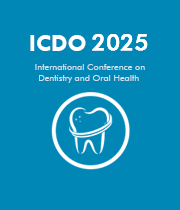Title: Comparative evaluation of the effects of artificial aging on mechanical properties of milled and 3d-printed zirconia materials
Abstract:
The introduction of 3D printing technologies in restorative dentistry has provided new alternatives to conventionally milled zirconia, yet concerns remain regarding their long-term mechanical stability. This study aimed to evaluate and compare the effects of artificial aging on the flexural strength, surface roughness, and nanohardness of milled zirconia and two types of 3D-printed zirconia. A total of six groups were prepared: milled non-aged (ZrC), milled aged (ZrA), 3D-printed type 210 non-aged (210C) and aged (210A), and 3D-printed type 230 non-aged (230C) and aged (230A). All specimens were subjected to thermomechanical aging, followed by mechanical testing. Flexural strength was assessed using a three-point bending test, surface roughness via contact profilometry, and nanohardness using a nanoindenter. Results showed that milled zirconia (ZrC and ZrA) maintained higher flexural strength compared to all 3D-printed groups, with only minimal strength reduction after aging. Nanohardness values were highest in milled groups and significantly declined in all aged groups, with the 230A group showing the lowest hardness values. Surface roughness increased after aging in most groups, particularly in ZrA and both 230 groups, while 210A unexpectedly showed a slight reduction compared to its non-aged counterpart. Statistical analysis revealed significant differences between material types and aging conditions for both nanohardness and surface roughness (p < 0.05), while differences in flexural strength were less pronounced. In conclusion, aging negatively impacted the nanohardness and surface roughness of zirconia, especially in 3D-printed materials. Although flexural strength remained relatively stable, the mechanical performance of 3D-printed zirconia appears to be more susceptible to aging compared to conventionally milled zirconia.



